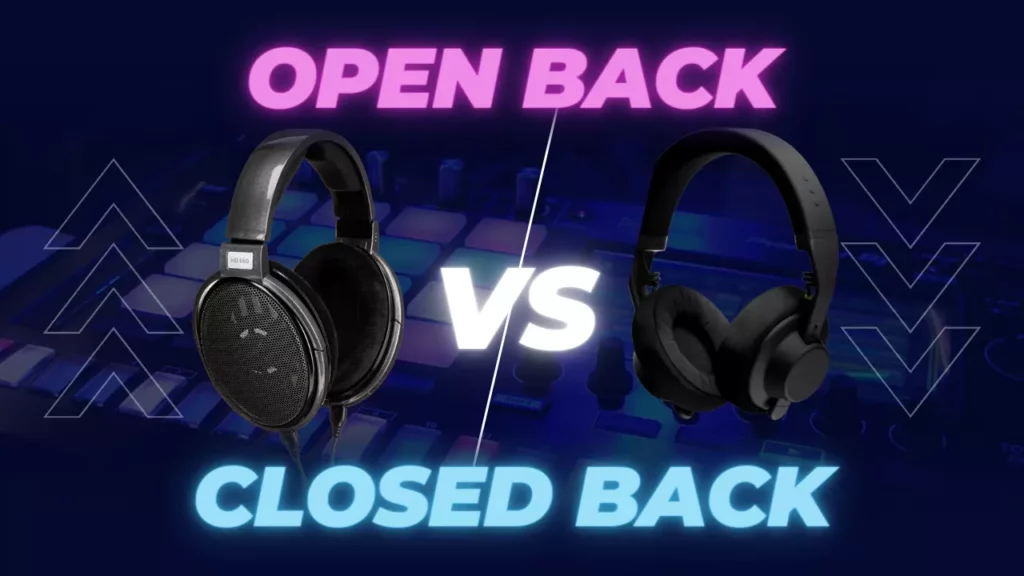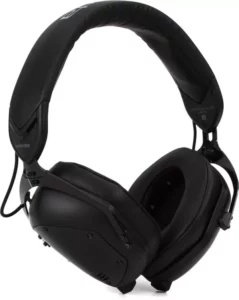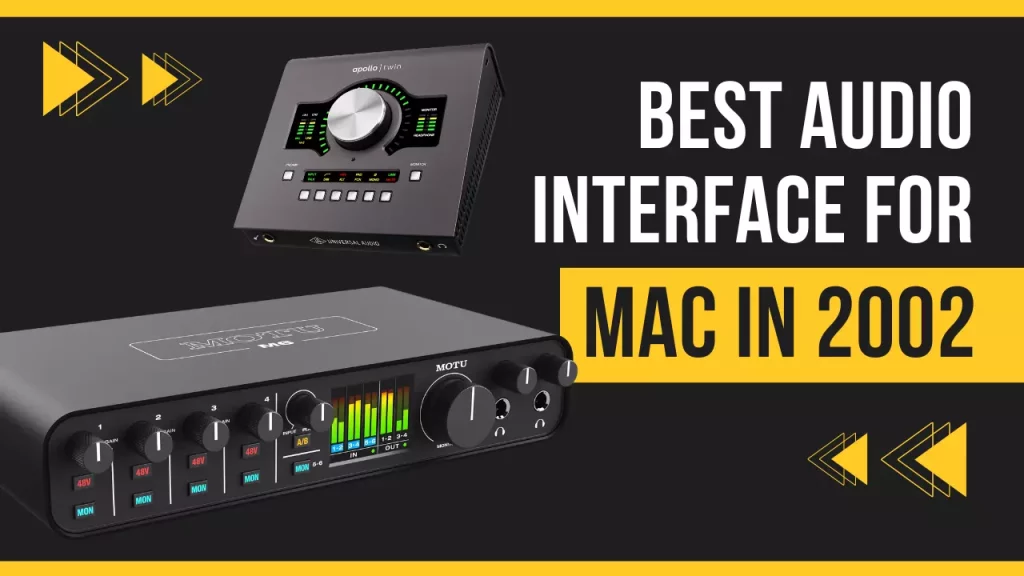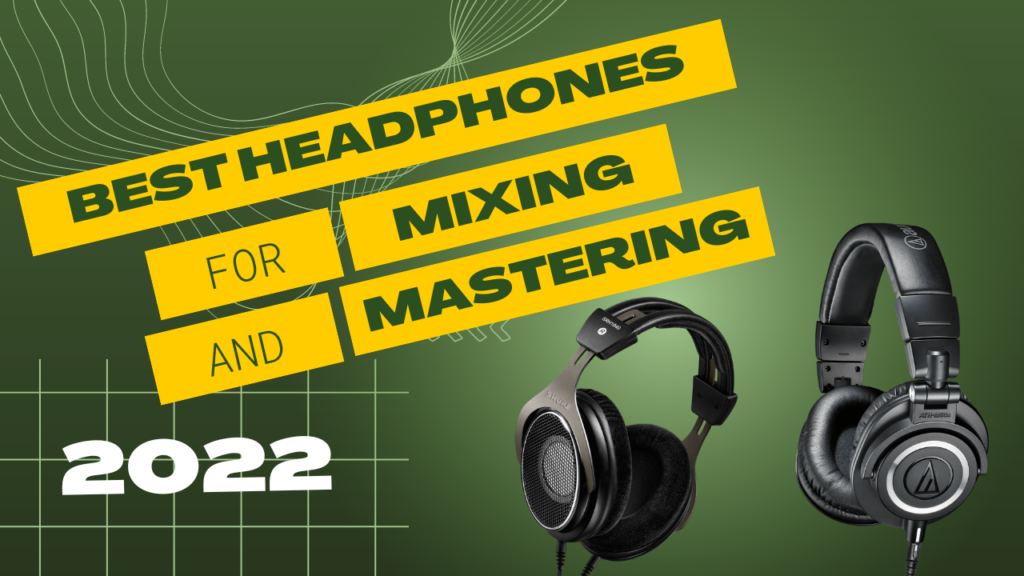Headphones are one of the most important and most personal pieces of production gear. But different styles are all suited for different needs, making choosing a pair overwhelming. This article will explore the differences in open back vs. closed back headphones. We’ve seen too many producers using headphones ill-suited to their needs and the environment they are used in. Don’t waste money on headphones that aren’t best for how you plan to use them. use this breakdown to help decide what’s right for you.
Table of Contents
Open Back vs. Closed Back Headphones
Headphone’s backing describes how they enclose the driver — the part that makes sound from electrical signals. Open Back headphones are not fully sealed. They sound more natural but provide less isolation. Closed Back headphones are fully sealed. They may enhance lower frequencies, but are more isolated.
This is straightforward enough, but we’ll explore how each design impacts the overall sound you (and those around you) experience.
Things to Consider
Open backed and closed back headphones are suited for different things.
And, there are great options for all budgets for each kind.
This means there isn’t one correct answer for what’s the “best” headphone. You’ll need to consider your needs and how you’ll use them.
Whether you’re a home studio producer who can’t use studio monitors at volume, or an engineer looking for a high end mixing reference, your headphones will be one of your most important pieces of gear, probably getting used every day.
But, which headphones are right for you?
To help you decide we consider:
- Isolation
- Sound
- Comfort
- Durability
- Pros & Cons
Open Back Headphones
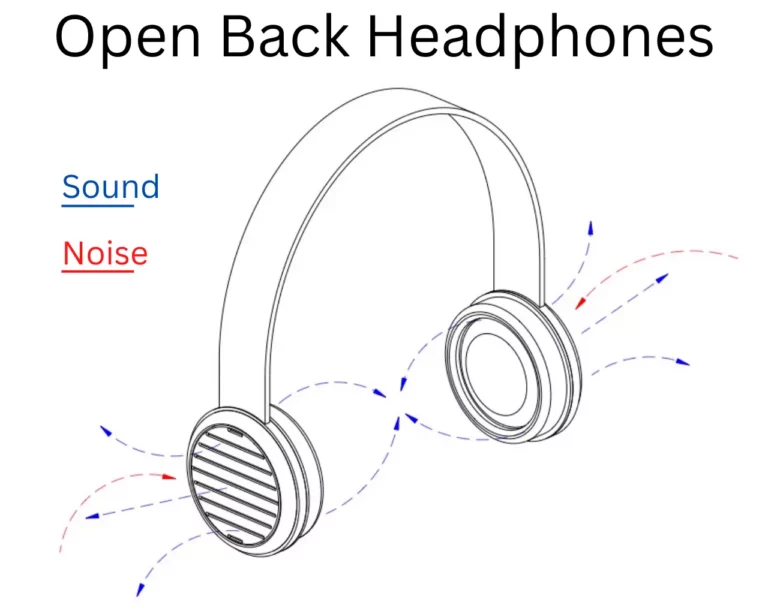
Open back headphones’ don’t fully enclose the rear of the headphone driver. Instead, the ear cups have vents or grills on the back for ventilation. This lets air move and vibrate freely around the driver to the outside in both directions. This means air can also pass into the ear cups from behind the driver.
By design, open-backed headphones let air pass through the ear cups to improve the listening experience and provide a wider soundstage. The free movement of air makes open back headphones sound clearer and more “natural.” But that doesn’t make them “better” or best-suited for your needs.
Open Back Headphones Isolation
Isolation refers to the amount of environmental noise that enters the headphones when listening. So, if you’re listening on the bus, you might hear the traffic, the sound of the brakes screeching, or the sounds of other people.
Think about opening the door to your studio room. Not only would people outside be able to hear your music, but you would then also be able to hear outside noise coming in.
Open back headphones have the same issue. The “open” design allows sound to pass both out of and into your earphones.
That means that someone sitting next to you can hear sound coming out of your headphones. It also means that noise around you can make its way in.
If you want privacy or you produce on a laptop in a shared space (like an office) these may not be the best option for you.
Also, because they let outside noise in, they’re not ideally suited for a noisy environment like a plane.
Open Back Headphones Sound
Open-back headphones sound tend to sound more natural because of the air flow inside the earpiece. The sound waves move more freely, allowing for a bigger soundstage, better imaging, and overall play with more clarity.
Overall, they are more linear and produce a balanced sound that’s great for mixing or mastering sessions.
Open Back Headphones Comfort
Because of the free flowing air, most people report open back headphones being more comfortable for longer listening sessions.
They are generally lighter, which reduce overall fatigue from wear. Also the movement of air helps your ears stay cool, which is a complaint some have about their closed back counterparts.
Open Back Headphones Durability
Practically, open back headphones are usually more fragile. Dust, dirt, and moisture can get into the sensitive electronics easier than if they were completely sealed.
A pair of open back headphones need to be treated with care and usually kept in an area dedicated to music, without having to go on the road.
Open Back Headphones Recap
Open Back Headphones Pros & Cons
Open Back Headphones Pros
- Clear, Natural Sound
- Breathable and airy
- Studio reference quality sound
- Reduced pressure on the ear for longer comfort
Open Back Headphones Cons
- Less Isolation
- More fragile
- Low frequencies can’t be felt in the same way as closed back
Recommended For
- Great for mixing & mastering
- Great for high quality audio files
- Listening at home in a dedicated environment
- Audiophiles who love listening to vocals or precise instruments
Not Recommended For
- Shared spaces like offices
- Noisy spaces like airplanes
Recommended Open Back Headphones
Sennheiser SH650
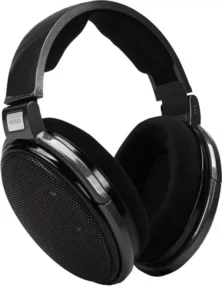
Closed Back Headphones
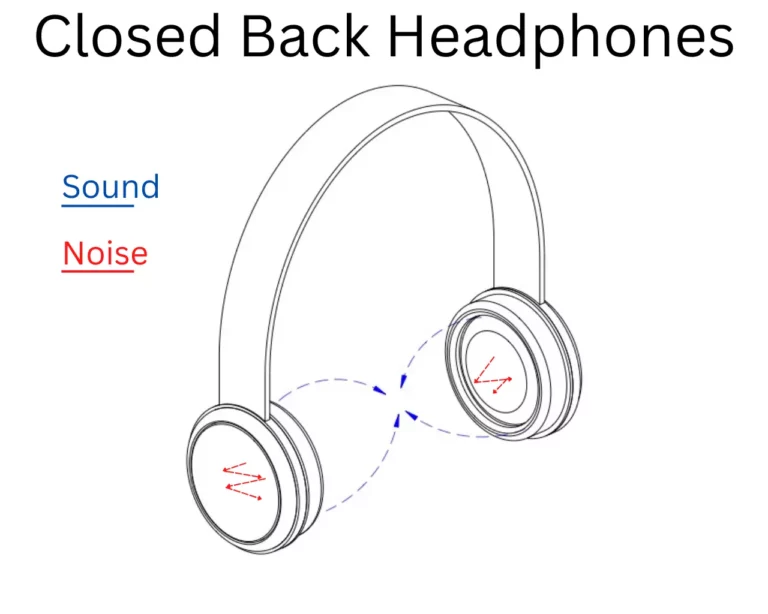
Closed-back headphones are completely sealed behind the driver. They are designed to only let sound out where it can reach your ear. The ears aren’t exposed to the outside environment, because the driver is not ventilated. That means they have a more intimate or vibrant feel since the audio is concentrated in your ears.
Closed Back Headphones Isolation
Think back to your studio with the open door. Now, close that door and not only will you be able to protect yourself from outside noise, but you’ll also enjoy extra privacy from people outside hearing your music.
Closed back headphones’ “closed” design operates the same way, only allowing sound to exit toward your ears. So, for privacy or producing in a shared space (like an office) these are a better option.
Also, because closed back headphones control how much sound can leak out, they are a great option for recording in a studio without risk of your mic picking up escaped sound.
Closed Back Headphones Sound
The “closed” design also affects the sound and overall listening experience.
Going back to the studio example, when you close the door you may get a reflection inside your room. Closed back headphones can have the same issues.
Enclosing the rear of a spear affects the sound that makes its way into your ears. Instead of escaping through the open back, the sound is blocked by the enclosure, and can reflect inside the earphone. It can cause a buildup of low frequencies or resonances while also blocking some higher frequencies.
Because of this, some bass heads tend to like closed back headphones because they can make bass feel punchier and more resonant. Some describe the bass as feeling deeper than in open back headphones.
While the sound can be more dynamic and engaging, they don’t sound as natural or faithful, meaning mixing with closed back headphones can be tricky.
Closed Back Headphones Comfort
Close back headphones tend to be heavier than their open back counterparts. While this does mean they typically have a stronger build, it also means they can be more tiring to wear for long periods of time.
Some people report their ears feeling warm in long sessions, as they aren’t getting enough ventilation.
Comfort remains a matter of preference, but generally most producers find closed back to be the less comfortable option.
Closed Back Headphones Durability
Closed back headphones build makes them more durable for most of the same reasons it makes them less comfortable. A more solid build that protects the driver from dirt and moisture can lead to a longer life span, especially if they’re going to be on the road.
Closed Back Headphones Recap
Closed Back Headphones Pros & Cons
Closed Back Headphones Pros
- More isolation
- Stronger construction
- Punchier bass
Closed Back Headphones Cons
- Poorer ventilation
- Frequency buildup and resonance
- Less authentic and natural sound
Recommended For
- Working in a shared space like an office
- Working in a louder place like on a bus or airplane
- Studio Recording
- Casual listening
Not Recommended For
- Exercising or working out
- Intense mixing or mastering sessions
Summary
Knowing the differences in open back vs. closed back headphones is important before investing in a quality pair.
Open back and closed back headphones differ in the way the earphones’ driver is enclosed. Open back headphones drivers are open and ventilated. This can give a more authentic and natural sound, and more comfort to the wearer. However, they offer less isolation, and can let noise in and out of the headphone.
Closed back headphones drivers are fully enclosed. This can cause sound reflections which can create an unwanted buildup of resonances. But, because of their superior isolation they are great for recording in a studio, and for working in shared on noisy environments.
Both types of headphones can offer a superb listening experience.
Deciding between open back vs. closed back headphones depends on your unique needs and listening environment.

